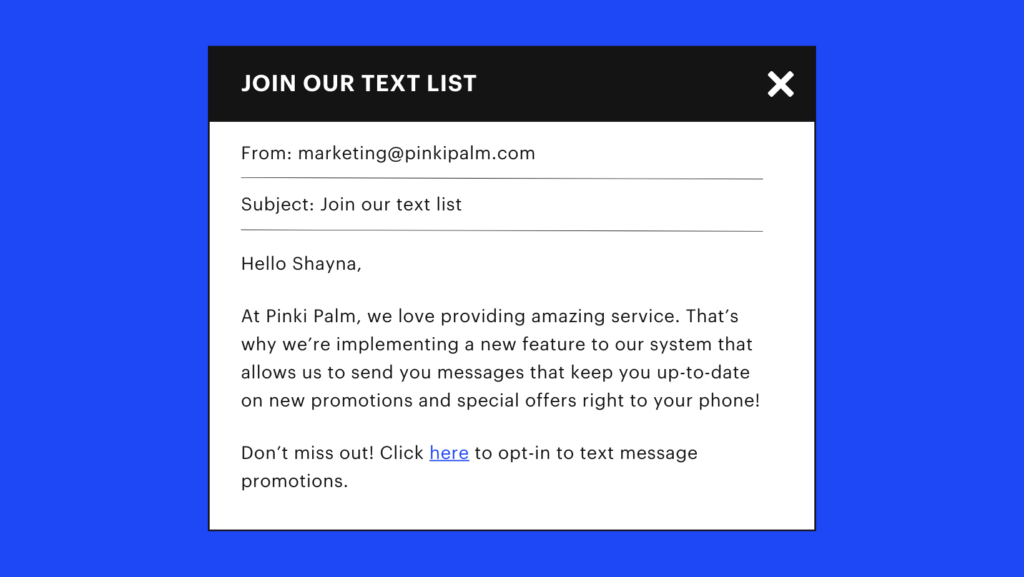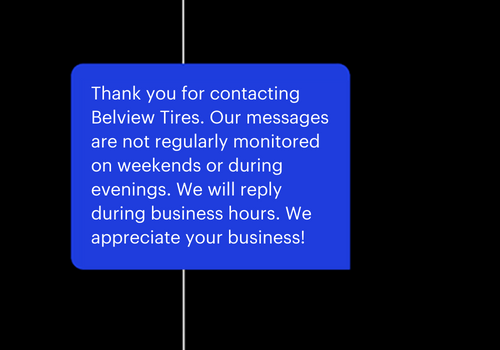Text, Call, and Email: The Fundamentals of Effective Communication
Text, call, and email—the progressive, the mainstay, and the traditional. These methods will cover all of your business communication needs, but how—and when—do you use each effectively?
The trick to flawless customer communication is creating the right balance between the 3 methods mentioned above. Read on to learn key customer communication fundamentals and how to provide the highest customer satisfaction through text, call, and email.
Communicating With the Modern Customer: Methods of Communication
Providing excellent customer service is all about seamless, convenient communication and quick problem solving, and the key to achieving that is using the right channel at the right time. To do this, you need to understand your customers—what they’re looking for, how they want to be reached, and for what purpose. And while juggling all of that info, you also have to keep in mind that each of your customer relationships are different and need to be handled on an individual basis. (Learn more about customer personas here.)
It’s overwhelming, to say the least.
Let’s look at each of the channels below to see when it is appropriate to use each as part of your customer communication strategy.
→Text
Yes, the rumors are true. Text has an open rate of over 98%. It’s the top dog of customer communication—your customers want you to offer this communication channel.
And did you know that over 40% of consumers say they are likely to switch to a different business because they offer text messaging to communicate? Over 65% of consumers think texting makes working with a local business more convenient. And consumers are nearly twice as likely (1.8x) to prefer texting to any other communication method.
With over 3.8 billion smartphones worldwide, it’s easy to see why text messaging is king—it’s the ultimate way for people to connect. It caters to the modern consumer in an asynchronous, personal, and freedom-promoting way that allows for casual conversations, quick fixes, and fast updates. However, don’t be too quick to crown text the king of all. Because text doesn’t allow for intonation and nuance or longer messages, it can increase the likelihood of miscommunication and failure to solve more complicated issues. While it’s an extremely versatile communication channel, it’s not a one-size-fits-all solution.
Use text to:
- Confirm appointments, bookings, and applications
- Send updates on shipping, inventory, COVID policies, operation hours, etc.
- Deliver promotional messaging and coupons
- Send website links
- Deliver payment links
- Ask for customer feedback or referrals
- Ask for reviews
- Celebrate holidays and birthdays
- Communicate basic or casual information
In addition to everything mentioned above, text can be a major money maker when you implement text campaigns. And SMS marketing platforms like Podium make it easy to make the most out of text message marketing.
Ready to dive into the world of business texting but still not sure how to get started? We shared more tips here.
→Call
When the problem is serious or the need for meaningful conversation is more than a short text message can handle, calling is the way to go.
Calling in its various forms (such as via softphone or voice chat) has become the go-to for matters that require more in-depth communication. Research shows that consumers prefer voice calls when they need to connect with not only their friends and family, but also their credit card companies, insurance agents, and banks.
Despite the fact that phone calls typically have lower response rates and require more time from both customers and employees, 36% of businesses approximate that their use of voice will increase in the next year, and 50% of businesses approximate that their use of voice will remain the same in the next year. The numbers don’t lie; voice is here to stay.
When it comes to the important stuff, you should almost always call. There’s no substitute for the human voice. Calling is excellent when nonverbal cues, nuance, and intonation are vital to the success of an interaction. Rely on call when you need to:
- Resolve a complex issue or problem
- Make a difficult sale
- Close a deal
- Secure a donation
- Communicate sensitive information
- Discuss multiple questions or issues
- Negotiate
- Have in-depth discussions
- Take care of emergencies
A good rule of thumb is: If you’re worried that something might not come across correctly via text message, err on the side of calling. And remember, when you do call, it’s important to let customers know who is calling them. That means paying for branded caller ID.
Pro tip: Often, it’s nice to text before you call. Setting expectations and letting customers know what is going to happen helps calls feel less intrusive, wastes less time, and increases efficiency.
Email is the catch-all as the channel that is particularly useful for sending communications that aren’t time-sensitive. It’s also a good idea to use email when your customers have initiated their first contact with you via email (because you already know that they are comfortable with the channel).
You can use email to communicate things that are less urgent, uncomplicated, and not necessarily casual, such as:
- A public service announcement
- Change in organizational or management structure
- Communications that include long files or attachments
- Longer communications that a text can’t cover but don’t warrant a call
You can also use email to grow your text opt-in list. Many organizations are already doing email marketing and have large email marketing lists. Enter: large opportunity.
You can convert your email marketing contacts into SMS marketing opt-ins by sending an email blast prompting people to opt-in to promotional texts. Typically, this is facilitated by a URL link to an online sign-up page, which can live in either the email copy or in your signature.

Customer Communication Best Practices
Now that you know which channel to use when, let’s go over some basics of great customer communication. Here are some best practices we recommend following across all channels.
- Only contact during business hours. If your customer gets a text from you at 4 am saying that sweaters are about to go on sale, they will not be happy—no matter how cute those sweaters are. Make it a habit to only contact your customers during business hours.
- Address customers by name. No matter your communication method, you should always address each customer by name. Using a customer’s name in business conversations is crucial for relationship building.
- Identify yourself and your business. Identifying the sender of your promotions or who’s making a call makes your communications feel authentic. In fact, 50% of consumers are more likely to respond to a text message from a business if the business introduces itself.
- Use conversational language. Depending on the type of business you run, your tone may be more or less formal. But no matter your industry, too much industry-specific jargon can be confusing and difficult to follow. Try to keep your communications clear, short, and conversational—like you’re talking to a friend.
- Include a call to action. If you skip the call to action (CTA), you miss the point of communication. Texts and emails, in particular, should include a direct CTA like, “Reply back to message to get 10% off your next order,” “Check out our new inventory,” “Schedule an appointment,” or “Stop by today.”
- Be relevant. Nobody wants more noise about something that doesn’t apply to them. Make sure that each time you contact your customers, you have a legitimate reason to do so.
A Bonus Tip—Try Automated Messaging
While we don’t recommend initiating contact with your customers after-hours, sometimes, your customers might try to contact you outside of business hours. What then?
Many businesses successfully use automated messaging features specifically for after-hours communication. You might consider actively sending texts during business hours and using automated messages when leads engage with you after-hours. An after-hours automated text might look something like this:

With the right technology, you can even respond automatically to FAQs. As the conversation continues, if the consumer asks a question that requires live assistance, text messaging platforms can alert an employee to send a non-automated response. This can save a huge amount of time for you and your employees, allowing you to keep your reputation of always responding to your customers and empowering you to offer the most effective customer service communication.
For more information about texting customers, check out “It Could Have Been a Text.”
How Podium can Help
Ready to use text, email, and calling perfectly in sync and improve customer communication? Try the platform that does it all from one place. Learn how Podium can help you use text, email, and calling in perfect harmony here. With top-of-the-line text message marketing, Webchat, and more, you’ll be able to increase customer loyalty and bring in new customers with ease.
Let Podium help you offer great customer service, every time.








